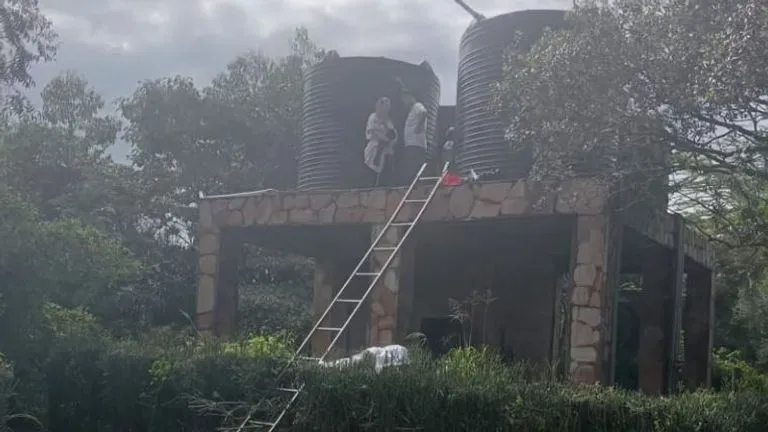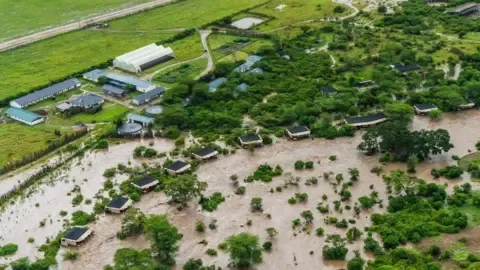The usually tranquil Maasai Mara national reserve in south-west Kenya has been ravaged by heavy rainfall, leaving scores of tourists stranded and forced to be airlifted out of the area. The crisis was set off when a river in the reserve burst its banks on Wednesday morning, submerging dozens of hotels, lodges, and camps that had become home to the tourists.
“Widespread flooding in the reserve is a concern for us,” said a spokesperson for the Kenya Red Cross, which has been working to rescue those affected. So far, the organization has managed to rescue more than 90 people, with the Narok county government deploying two helicopters to aid in the evacuation efforts.
The Maasai Mara reserve is a prized destination for tourists, who flock to the area each year to witness the annual wildebeest migration from the Serengeti in Tanzania. The flooding has dealt a significant blow to the reserve’s tourism industry, which had been struggling to recover from the COVID-19 pandemic.
The flooding is part of a larger crisis in Kenya, where more than 170 people have died since mid-March when the rainy season began. The Meteorological Department has warned that more rain is expected in the coming week, heightening concerns about the potential for further flooding and landslides.

In the capital city of Nairobi, three main roads were temporarily closed due to flooding on Wednesday. The Kenya Red Cross also rescued 11 people from a residential area in the outskirts of the city after their homes were inundated with water overnight.
Tragedy struck on Monday when a river burst through a clogged tunnel in the Mai Mahiu area of western Kenya, sweeping away houses and damaging roads. The incident left 48 people dead and more than 80 others missing. Search and rescue operations are still underway, with President William Ruto ordering the military to join in the efforts. Local residents have criticized the pace of the rescue efforts, citing a lack of equipment to dig through the debris.
The government has urged people living in flood-prone areas to evacuate or be forced to leave as water levels in two hydroelectric dams have reached a “historic high.” With the situation showing no signs of improvement, the people of Kenya can only hope that the worst of the flooding is behind them and that their country can begin to rebuild and recover soon.

